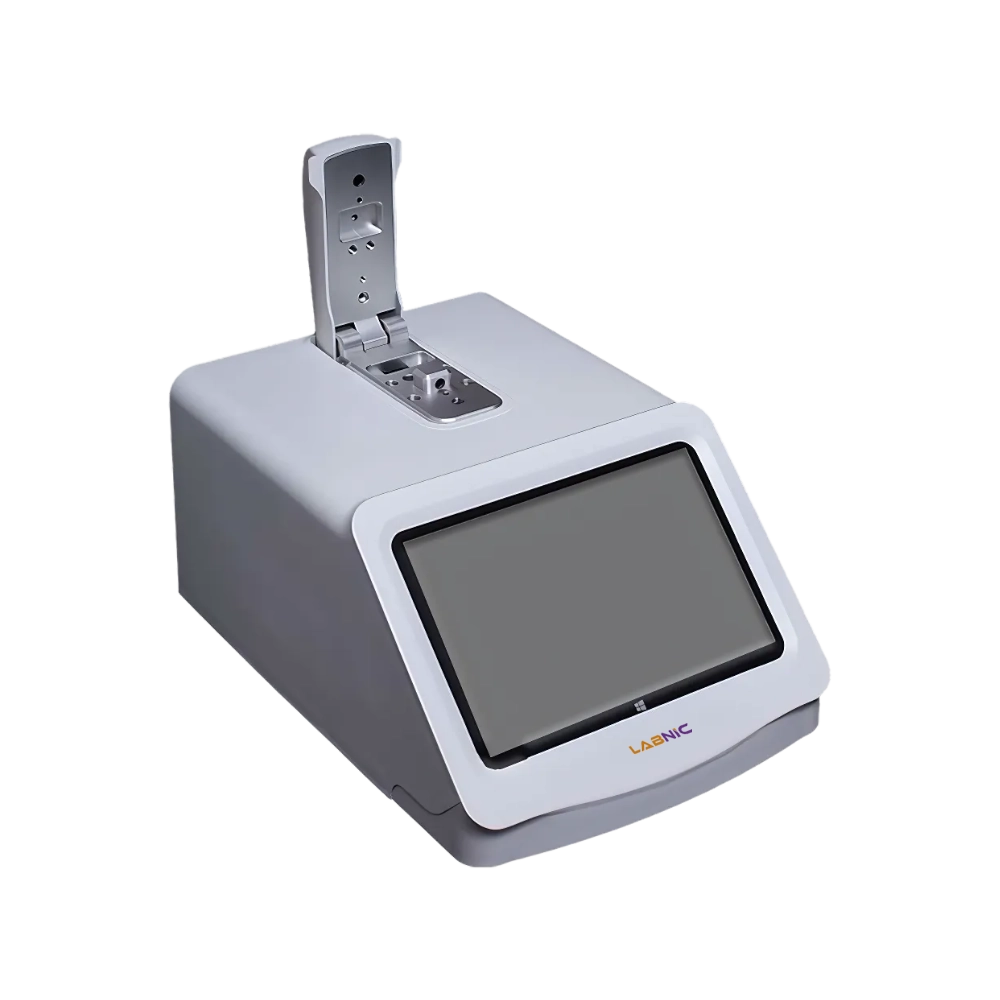
Micro Spectrophotometer LBN-MS161 operates at an optical range from 190 to 1100 nm. It offers measurement for low sample volumes down to 0.3 μL. Equipped with a user-friendly touchscreen interface and intuitive software. Designed with USB and Wi-Fi connectivity for seamless data export and sharing. Our Micro Spectrophotometer is portable making it suitable for labs with limited bench space.
| Optical Path | 1, 0.5, 0.05 mm Automatic Conversion |
| Wavelength Scanning Range | 190 to 850 nm |
| Wavelength Accuracy | ± 1 nm |
| Wavelength Resolution | 2 nm (FWHM Hg 546 nm) |
| Optical Range | 190 to 1100 nm |
| Absorbance Range | 0.002 to 300 Abs |
| Absorbance Accuracy | 0.002 Abs |
| Sample Volume | 0.3 to 2 μl |
| Nucleic Acid Range | 0.4 to 15000 ng/pl (dsDNA) |
| Protein Range | 0.01 to 400 mg/ml (BSA) |
| Light Source | Xenon Lamp |
| Detector | 3864 Linear CCD Array |
| Detection Time | > 3s |
| Dimension | 200 × 300 × 200 mm |
| Weight | 3.5 kg |
Micro Spectrophotometer LBN-MS161 is used for sample analysis and quantification in fields like molecular biology, biochemistry, physics, chemistry, material science, engineering, environmental testing and many others.
Micro Spectrophotometer LBN-MS161 is used for sample analysis and quantification in fields like molecular biology, biochemistry, physics, chemistry, material science, engineering, environmental testing and many others.
Most Frequently Asked Questions
1. What is a micro spectrophotometer?
Ans. A microspectrophotometer is an instrument that combines a microscope and a spectrophotometer to analyze the optical properties of microscopic samples. It measures absorbance, reflectance, or fluorescence from very small sample areas.
2. What are the applications of a micro spectrophotometer?
Ans. It is used in materials science, biology, chemistry, and forensic analysis to study pigments, coatings, biomolecules, and thin films. It helps identify and quantify substances in microscopic samples.
3. What types of samples can be analyzed using a micro spectrophotometer?
Ans. It can analyze biological cells, tissues, DNA, thin films, and industrial materials. The instrument is useful for studying samples that are too small for conventional spectrophotometry.
4. What is the principle behind micro spectrophotometry?
Ans. The principle is based on the absorption, transmission, or reflection of light by a sample at different wavelengths. By analyzing this interaction, the instrument provides detailed spectral data about the sample.
5. What wavelength range does a microspectrophotometer cover?
Ans. Most models cover ultraviolet (UV), visible (VIS), and near-infrared (NIR) wavelengths, typically ranging from 200 nm to 1000 nm. This allows for versatile spectral analysis.
Micro Spectrophotometer LBN-MS161 operates at an optical range from 190 to 1100 nm. It offers measurement for low sample volumes down to 0.3 μL. Equipped with a user-friendly touchscreen interface and intuitive software. Designed with USB and Wi-Fi connectivity for seamless data export and sharing. Our Micro Spectrophotometer is portable making it suitable for labs with limited bench space.